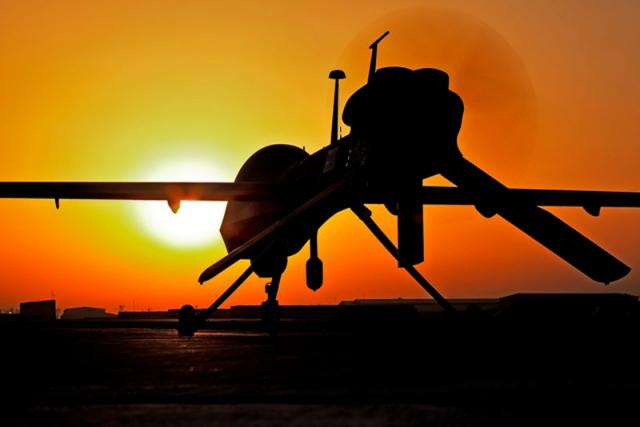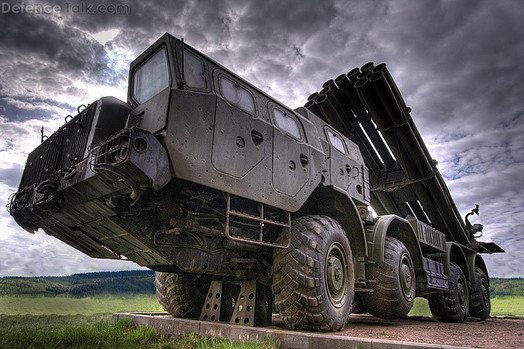Unmanned aircraft systems have long held great promise for military operations, but technology has only recently matured enough to exploit that potential. The Department of Defense (DoD) has published detailed, unclassified plans to purchase over the next ten years about 730 new medium-sized and large unmanned aircraft systems that are designed for reconnaissance and light attack missions. CBO estimates that completing those investments would cost about $37 billion through 2020.
At the request of the House Budget Committee, today CBO released a study comparing the costs of DoD’s plans for those systems and the capabilities they might provide with the costs and capabilities of some alternative plans. The options are meant to illustrate the implications of different approaches to enhancing capabilities and are not designed to reach any specific goal or to counter any specific adversaries that might arise in the future.
CBO has analyzed eight alternatives—three for the Air Force and five for the Army—to the services’ near-term plans for expanding their fleets of medium-sized and large unmanned aircraft. The options would vary the mix of unmanned aircraft systems that are purchased, the way that unmanned systems are assigned to units and operated in geographic areas where units are deployed, or both. Through 2020, the costs of the options examined by CBO would range from $3.7 billion less than DoD’s plan to $2.9 billion more.
The study presents each alternative’s likely effect on force-wide capability and acquisition costs. To compare the capability that could be expected as a result of such changes, CBO calculated an aggregate measure—the payload-duration—that captures both the ability of an aircraft to carry sensors or weapons (payload) and its ability to remain orbiting over a given location (duration).
The Air Force’s Plans and Options
The Air Force currently operates at least four types of medium-sized or large unmanned aircraft: Global Hawks, Predators, Reapers, and Sentinels. The Air Force’s near-term goals are to increase the number of aircraft that can be continuously and simultaneously operated by purchasing 28 of the large Global Hawk aircraft through 2018 and 480 medium-sized aircraft (either Reapers or a follow-on design) through 2020. CBO estimates that those plans will cost about $20 billion. Plans for stealthy aircraft such as the Sentinel—whose mere existence was only recently acknowledged by the Air Force—remain classified.
CBO’s three options for the Air Force examine the implications of more quickly developing and fielding a new aircraft—notionally dubbed the MQ-SX—that would be intermediate in size between the Reaper and the Global Hawk. Specifically,
- Under Option 1, the Air Force would purchase 224 MQ-SXs in lieu of 336 Reapers, costing the same as DoD’s plan and providing improvement in payload-duration.
- Under Option 2, all 336 Reapers would be replaced with MQ-SXs, costing $2.9 billion more than DoD’s plan and providing up to 70 percent more payload-duration.
- Option 3 would have the largest cost savings of all of the options—$3.7 billion, CBO estimates—by buying 24 MQ-SXs in lieu of 24 Global Hawks. This option would result in decreased payload-duration, however, especially at long ranges.
The Army’s Plans and Options
The Army currently operates three types of medium-sized unmanned aircraft systems: Hunters, Shadows, and Predators (or aircraft closely based on the Predator). Over the next five years, the Army plans to continue upgrading the capabilities of its existing Shadows, and to purchase 107 more medium-altitude Grey Eagles (the Army’s name for its latest version of the Predator). CBO estimates that those plans will cost about $6 billion.
CBO examined five options for the Army involving purchasing aircraft other than the Grey Eagles and changing the way unmanned aircraft support would be provided to Army units in the field. Specifically:
- Options 4 and 5 would include buying Reaper aircraft, which are more capable than Grey Eagles. Under Option 4, the Army would purchase 69 Reapers and 78 fewer Grey Eagles, costing the same relative to DoD’s plan through 2020. Option 5 would increase costs by about $500 million, as the Army would replace all 78 Grey Eagles with Reapers. Both options would increase payload-duration.
- Option 6 examines the effects of buying a greater quantity of less capable systems. Under this option, the Army would purchase 350 Firescouts (unmanned helicopters being developed for basing aboard Navy ships) in lieu of 78 fewer Grey Eagles. This option would cost about the same as DoD’s plan, CBO estimates, and would increase payload-duration at short ranges but decrease payload-duration at longer ranges.
- Options 7 and 8 illustrate the effects of changing the way that unmanned systems are assigned to military units and are operated in the theater of combat: Instead of being equipped with their own aircraft, deployed divisions would be given operational control of aircraft from a central fleet. Using that approach under Option 7, the Army would purchase 42 fewer Grey Eagles and save $1.3 billion, CBO estimates. Option 8 would save $1.0 billion by using that approach and purchasing 36 Reapers and 78 fewer Grey Eagles. These options would result in less payload-duration for the overall fleet, but deployed forces would have the same or improved unmanned aircraft support (as measured by payload-duration) available to them.
This study was prepared by Bernard Kempinski of CBO’s National Security Division.
[Download not found]










